RFID Laundry Management FAQ
127how RFID laundry tags transform commercial laundry management. From hotels to hospitals, RFID tracking reduces losses, improves efficiency, and extends linen lifespan.
MoreAll RFID Product
RFID (Radio Frequency Identification) tags contain microchip and antenna, allowing wireless data exchange with RFID readers. Each book is tagged with unique RFID label that stores its identification data. When the book approaches RFID device, the system reads the tag automatically—enabling real-time check-in, check-out, inventory, or anti-theft verification, without manual scanning.

Automatic Identification for Higher Efficiency
RFID allows simultaneous reading of multiple tags, greatly improving the speed of borrowing, returning, and inventory.
No Line-of-Sight Required
Unlike barcodes, RFID doesn’t need alignment. Tags can be read regardless of orientation, streamlining the user experience.
Accurate Inventory Tracking
Staff can perform inventory by simply walking past shelves with a handheld RFID reader, instantly detecting misplaced or missing books.
Enhanced Anti-Theft Security
RFID tags can embed security features. Unauthorized removal triggers alarms at RFID-enabled security gates.
Better System Integration
RFID works seamlessly with library management systems for centralized, real-time data processing and digital services.
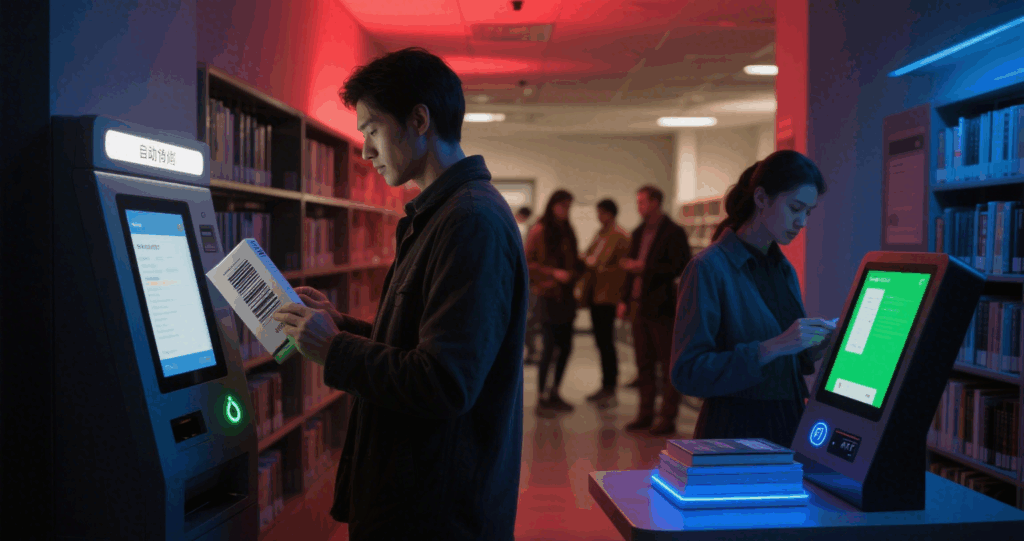
Self-Service Check-in/out Kiosks: Readers can borrow or return books independently without staff assistance.
Smart Shelves: Real-time book tracking and guided search via integrated RFID readers.
Mobile Inventory Devices: Quick and efficient stock checks with handheld scanners.
Anti-Theft Gates: Protect book assets and reduce losses through automated security alerts.
Automated Sorting Systems: RFID enables auto-sorting and return-to-shelf processes for faster restocking.
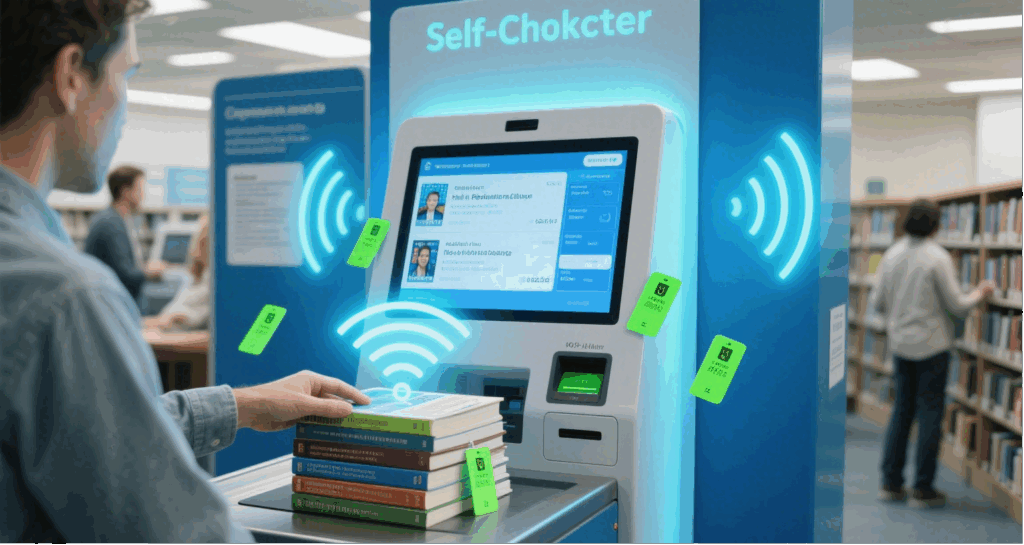
In high-volume, fast-paced libraries, traditional barcode systems struggle to meet operational demands. RFID dramatically improves workflows, reduces staffing needs, and lowers book loss rates—making it a wise investment for modern library management.
From university libraries and public libraries to specialized archives, implementing RFID brings measurable improvements in service quality and operational efficiency. It’s a critical step in the digital transformation of modern libraries.
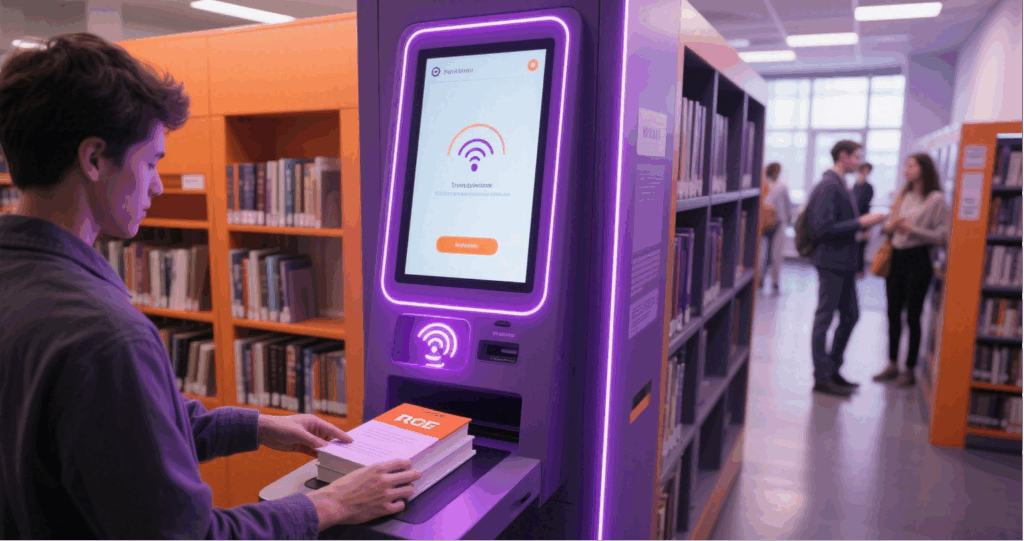
As library systems continue their shift toward automation and digitalization, RFID stands out as powerful tool for smart book management. Understanding how RFID tags work and their practical benefits helps librarians and decision-makers make informed purchasing choices.

Cykeo CK-G0628 smart rfid book locker features 21.5″ touchscreen, ISO 14443A RFID, and
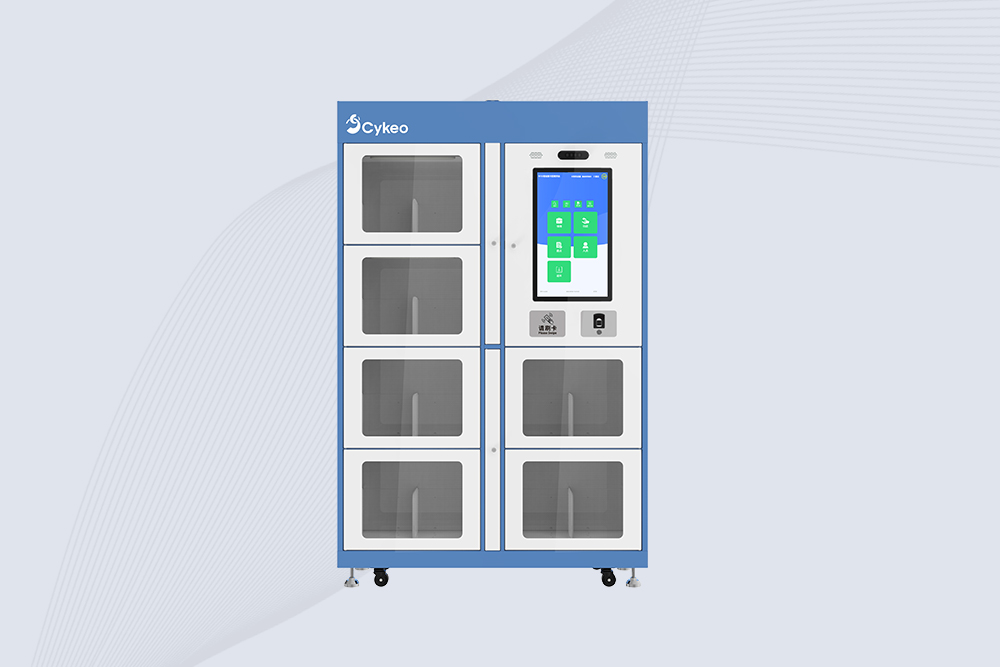
Cykeo CK-G68B RFID smart bookcase features BookEye™ technology, 175-book capacity, and SAP integration for automated library management. Industrial-grade construction for 24/7 unmanned operations.
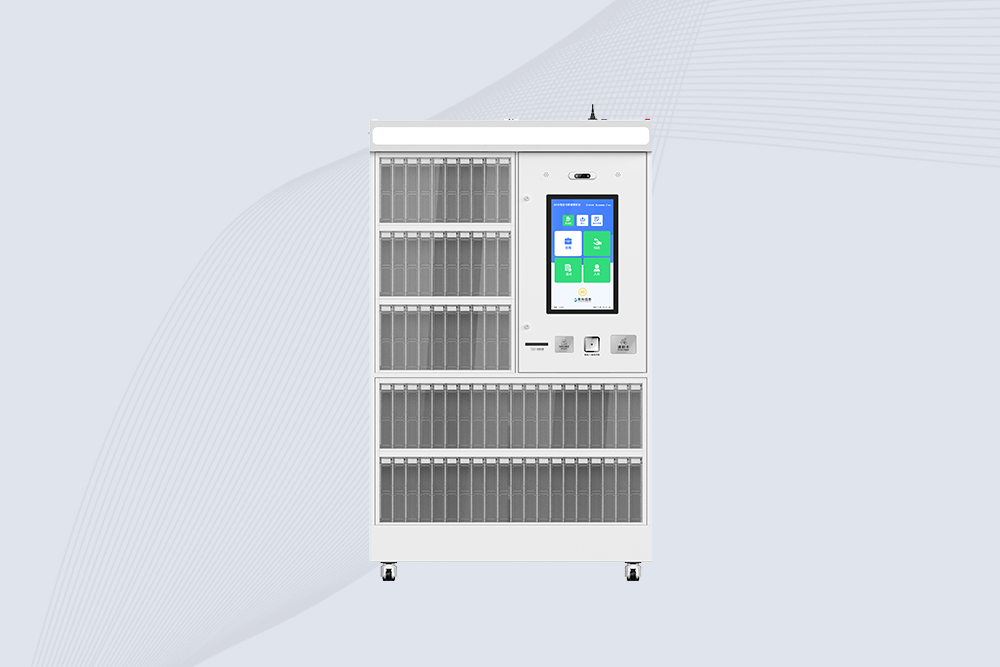
Cykeo’s RFID Mobile Library Cabinet enables 24/7 self-service book lending with 100-tag RFID scanning, facial recognition & solar power. Ideal for schools/communities.
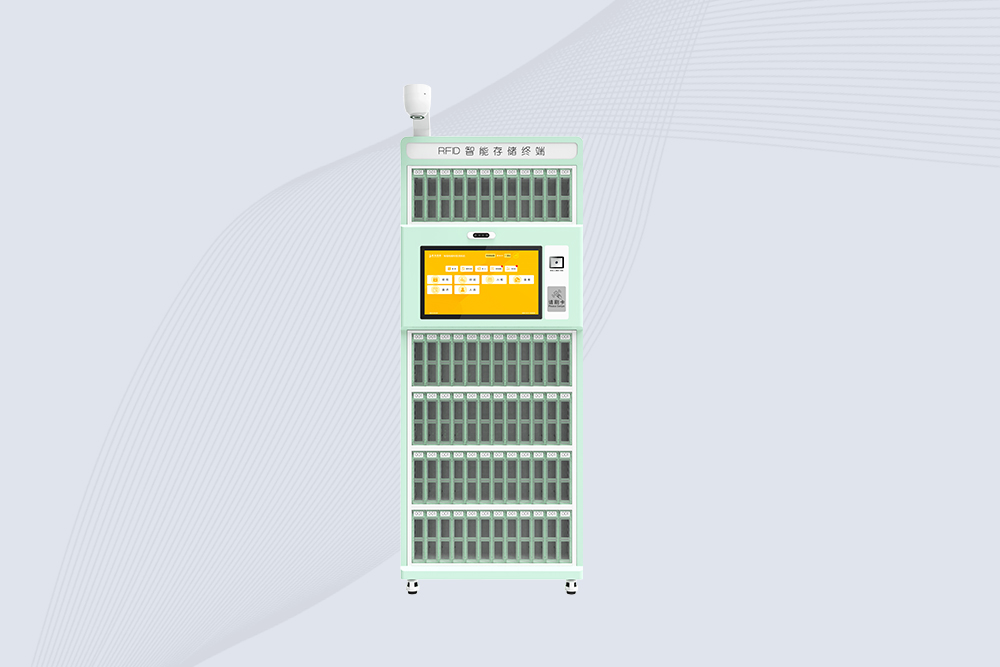
Cykeo’s RFID Book Reservation Locker offers 24/7 contactless book pickup, AI facial recognition & solar power for libraries/archives. Supports 72 RFID slots.
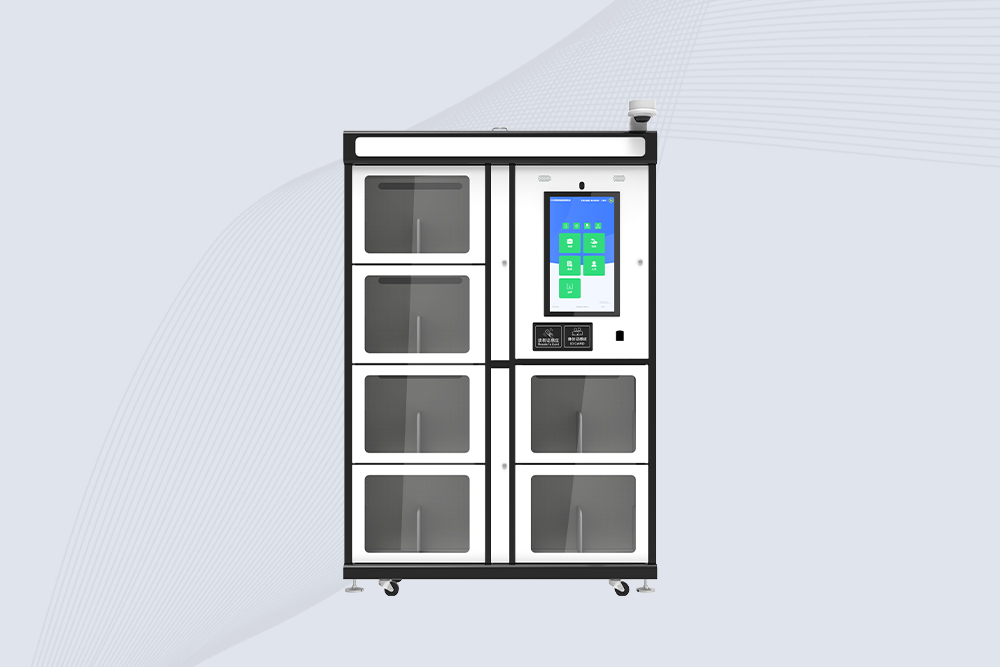
Cykeo’s industrial RFID School Library Cabinet features Impinj R2000 UHF technology, 21.5″ touchscreen & customizable compartments for academic archives, museums and libraries. Dual OS supports Windows/Android.
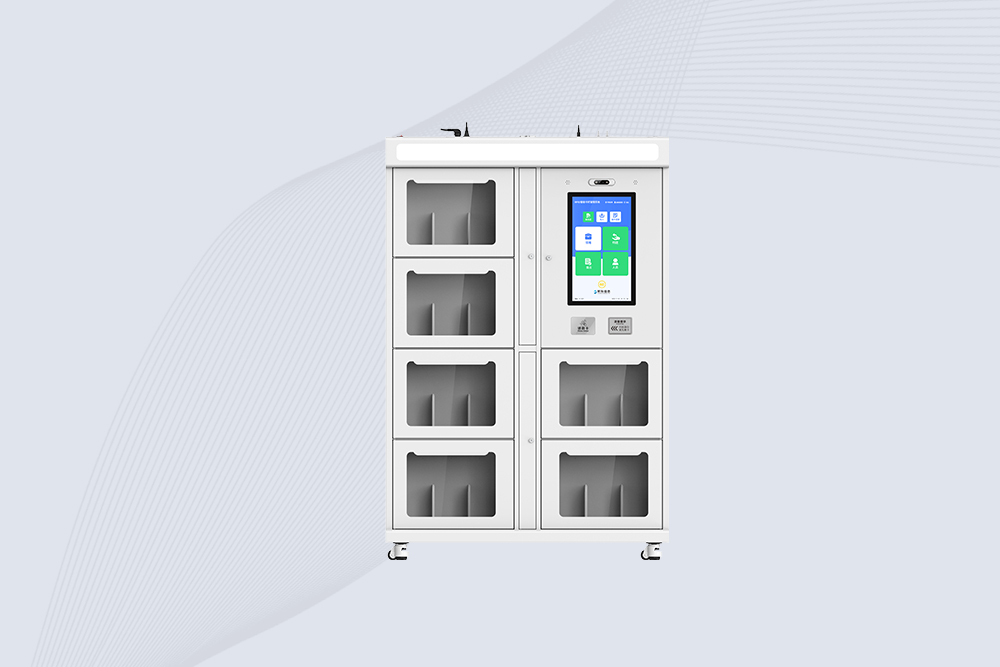
Cykeo’s RFID Book Inventory Cabinet features 7 compartments, Impinj R2000 UHF technology & dual OS for libraries/archives. 99.98% recognition accuracy with solar/cloud options.
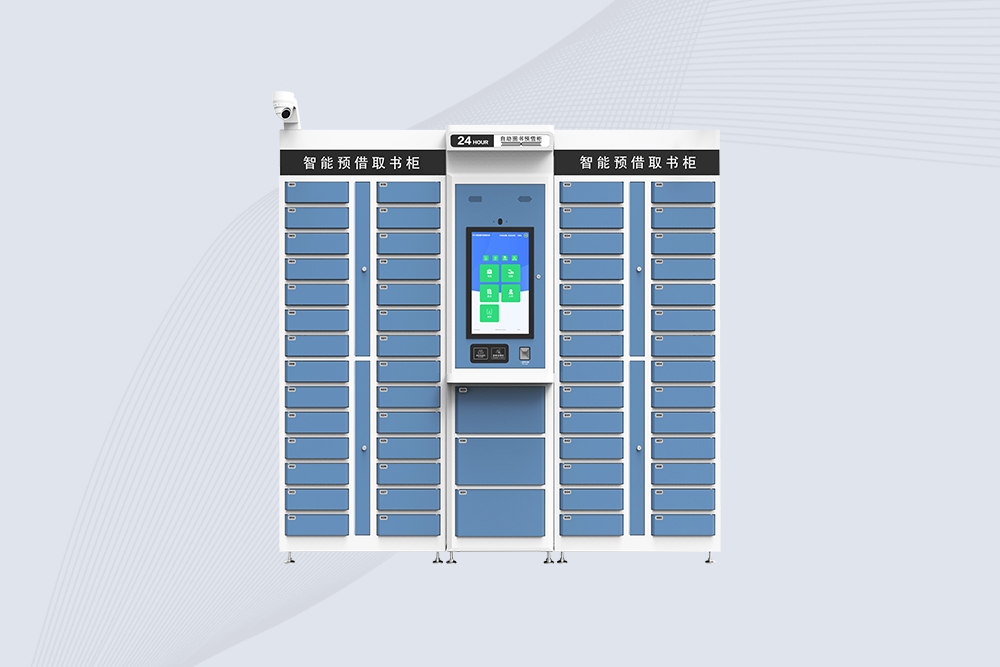
Cykeo’s RFID Smart Library Cabinet enables 24/7 book reservations with 59 compartments, biometric security & cloud sync. Ideal for universities/public libraries. Windows/Android OS.
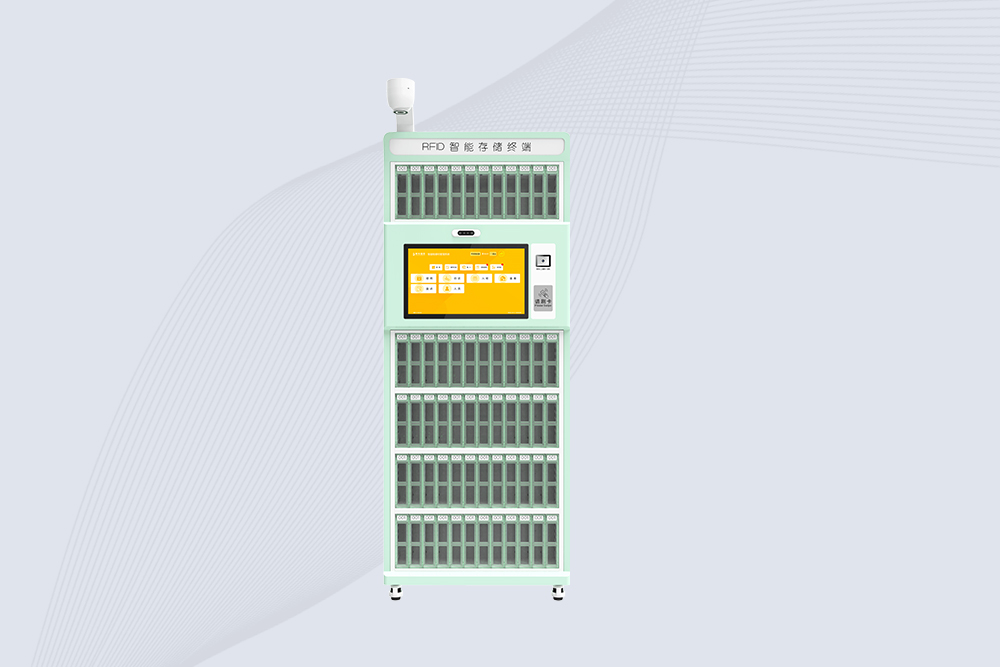
Cykeo’s RFID Library Management Cabinet offers 72-cell precision control for archives/labs/retail. Features dual-band UHF/HF scanning, facial authentication & cloud sync. ISO 18000-6C/15693 certified.
how RFID laundry tags transform commercial laundry management. From hotels to hospitals, RFID tracking reduces losses, improves efficiency, and extends linen lifespan.
MoreLearn how RFID tool tracking works — from tag selection and reader setup to real-world workflows and troubleshooting. A complete guide for factories, workshops, and field service teams to regain control of tool management.
MoreLearn how to integrate RFID readers with legacy systems without disruptions. Discover Cykeo’s solutions for seamless compatibility and operational efficiency.
MoreDiscover the differences between passive and active RFID modules, their ideal applications, and key factors to consider for your project. Make an informed decision with our guide.
More